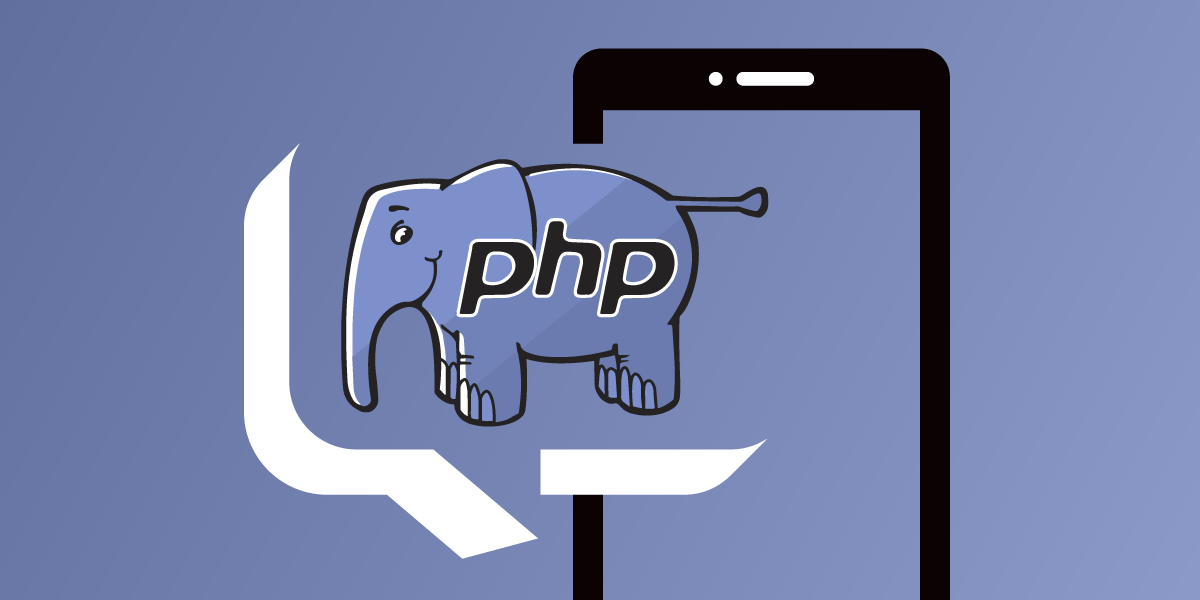
Share:
Michael is a polyglot software engineer, committed to reducing complexity in systems and making them more predictable. Working with a variety of languages and tools, he shares his technical expertise to audiences all around the world at user groups and conferences. Day to day, Michael is a former developer advocate at Vonage, where he spent his time learning, teaching and writing about all kinds of technology.
Receiving an SMS with PHP
We've previously covered sending an SMS with PHP, but that's only half of the conversation. In this post we're going to look at allowing people to send you an SMS.
The source code for this blog post is available on Github.
You’ll need PHP installed before working through this post. I’m running PHP 7.4, but the code here should work on PHP 7.3 and above. You'll also need Composer to download our dependencies.
Finally, you'll need the Vonage CLI installed. We'll use it to purchase a phone number and configure our Vonage account to point at our new application.
To complete this tutorial, you will need a Vonage API account. If you don’t have one already, you can sign up today and start building with free credit. Once you have an account, you can find your API Key and API Secret at the top of the Vonage API Dashboard.
This tutorial also uses a virtual phone number. To purchase one, go to Numbers > Buy Numbers and search for one that meets your needs.
When Vonage receives an SMS for a phone number that you own, they make a HTTP request to a URL that you've configured containing all of the information about the SMS. (Don't worry about configuring this URL yet, we'll get to it a little later on)
To receive the incoming SMS content, we're going to be using the Slim framework Let's install it now with composer:
When we receive an SMS, we're going to log out all of the information that Vonage provide to the console. In the real world, you could store this in a file or a database.
Vonage will make either a GET or a POST request to your application with the data, depending on how your account is configured (you can see this under HTTP Method in the dashboard). In this post, we'll write an application that can handle both HTTP methods:
Create a file named index.php with the following contents. We bootstrap our Slim app, define a handler that returns a HTTP 204 response and then instruct Slim to use this handler whenever we receive a GET or a POST to /webhooks/inbound-sms:
<?php
use \Psr\Http\Message\ServerRequestInterface as Request;
use \Psr\Http\Message\ResponseInterface as Response;
use Slim\Factory\AppFactory;
require 'vendor/autoload.php';
$app = AppFactory::create();
$handler = function (Request $request, Response $response) {
return $response->withStatus(204);
};
$app->map(['GET', 'POST'], '/webhooks/inbound-sms', $handler);
$app->run();
With this code all we're doing is returning with a 204 response code, which says that everything is OK. To log the parameters we received we need to check if there is any data returned by \Vonage\SMS\Webhook\Factory::createFromRequest($request).
At this point, all of the parameters are stored in a variable named $sms and we can output them to the terminal using error_log('From: ' . $sms->getMsisdn() . ' message: ' . $sms->getText());. Putting that all together, your $hander should look like the following:
$handler = function (Request $request, Response $response) {
$sms = \Vonage\SMS\Webhook\Factory::createFromRequest($request);
error_log('From: ' . $sms->getMsisdn() . ' message: ' . $sms->getText());
return $response->withStatus(204);
};
Save this file and then open up a new terminal window. Let's start the built in PHP server and serve our application on port 8000.
php -t . -S localhost:8000If you visit http://localhost:8000/webhook/inbound-sms?msisdn=14155550100&text=Hello+World, you should see from and text in the same terminal that you started the PHP server in.
That's really all there is to it. Receiving an SMS with Vonage is really easy due to the fact they transform an SMS in to a HTTP request for us.
Whilst our application is complete, our job isn't quite finished yet. To send a HTTP request to our application, Vonage needs to know which URL our application is running on.
We're going to use ngrok to expose our local application to the internet. Run ngrok http 8000 and make a note of the ngrok URL generated (it'll look something like http://abc123.ngrok.io).
With Vonage, each phone number you own can have a different callback URL that they use to send inbound SMS to.
Let's start by purchasing a phone number using the Vonage CLI that we can use to test. Firstly pick an available number to buy:
And then buy it:
Now create a new application with the URL to send the inbound SMS to:
Now we link our number to our application:
At this point, you can send an SMS to your Vonage number and watch as it appears in your terminal. It may take a few minutes due to network latency, but it should arrive soon!
In just 20 lines of code, we went from zero to being able to receive inbound SMS messages in our application.
The developer docs have more information about receiving inbound SMS messages with PHP, including a description of all of the available parameters that Vonage may send to you.
If you have any questions about this post feel free to join the Vonage community Slack channel, where we're happy to help.
Share:
Michael is a polyglot software engineer, committed to reducing complexity in systems and making them more predictable. Working with a variety of languages and tools, he shares his technical expertise to audiences all around the world at user groups and conferences. Day to day, Michael is a former developer advocate at Vonage, where he spent his time learning, teaching and writing about all kinds of technology.
